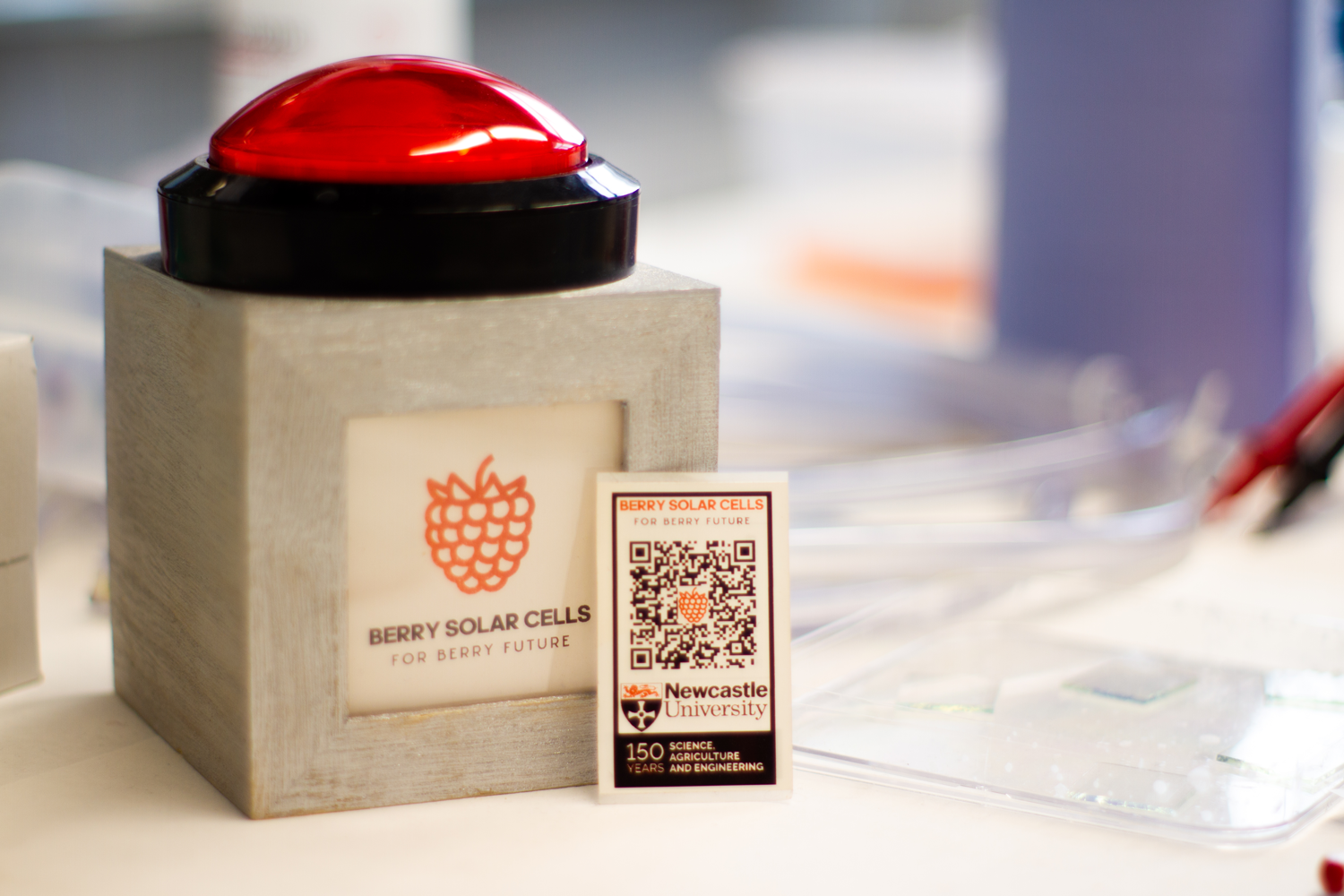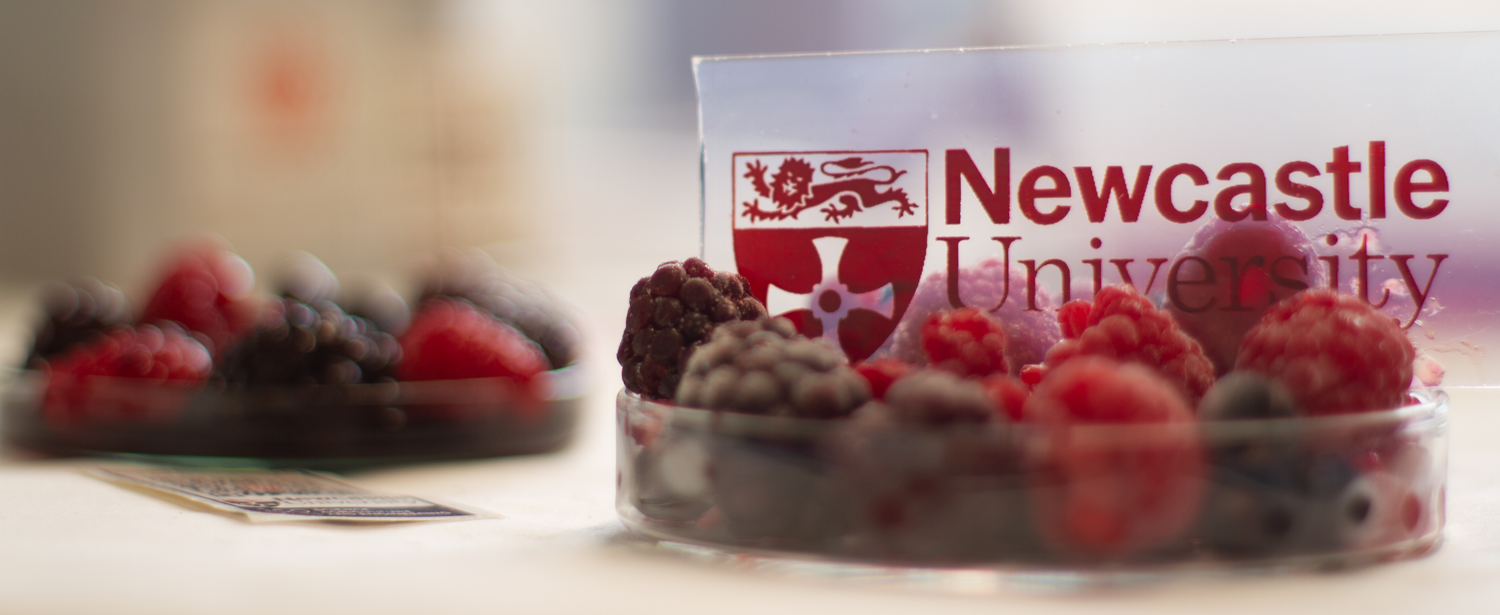WELCOME To BERRY FUTURE
WHAT’S THE PROBLEM?
By 2025 there will be an estimated 75 billion internet-enabled devices on our planet. These increasingly ‘smart’ devices will all need power to communicate with each other. For this reason, a local low-maintenance power supply will be necessary to power this ‘internet of things’.
Whilst batteries are tremendously useful, an estimated 90% of batteries aren’t recycled and end up in landfill. Traditional photovoltaic (solar) panels, also have their limitations when it comes to powering electronic devices; specifically, that 70% of these IoT devices are indoors, therefore intermediary battery storage is still required.
It’s for all these reasons and more that our lab has dedicated itself to finding innovative new solutions to the challenge of clean, affordable energy…

CLEANER, SMARTER ENERGY HARVESTING
WHAT’S THE SOLUTION?
Our team at Newcastle University has been working to make dye-sensitized cells more efficient using by combining state-of-the-art technologies with the natural properties of berry juice to generate electricity and provide a low-cost, sustainable power source.
Our Berry Solar Cells are printable, non-toxic and can provide continuous power from solar or artificial light sources, making them more versatile in terms of application than traditional silicon photovoltaics (PV) panels.
Berry Solar Cells have the potential to replace batteries for certain applications, and therefore reduce our reliance on the mining of metals such as cobalt and silicone, and in this way offer up clean, sustainable methods in our drive for clean, carbon-neutral energy sources.

LIGHT IS THE BEST SOURCE
OF ENERGY WE HAVE
HOW DO BERRY CELLS WORK?
A young scientist makes his own Berry Cell
Berry Cells are composed of a photanode, an electrolyte and a counter electrode. A semi-conductor layer is applied a transparent substrate, in this case conductive glass. This then gets coated in berry juice until the anthocyanine in the berry juice has absorbed enough to attach to the molecules in the semi-conductor.
But why are we using dye extracted from berries? The semi-conductor material (titanium dioxide) needs high energy photons to promote the generation of electrons, and the dye molecule in the berries needs less energetic photons to promote the conduction of electrons.
We then apply a layer of pencil graphite as the counter-electrode, and add an electrolyte solution to the Berry Cell to act as a redux shuttle - either iodide or copper - which is essential for regenerating the dye.
When light (sun or ambient) excites the molecules of the dye, this triggers a charge-transfer process from the dye to the semi-conductor layer. The charge travels round the circuit, then interacts with the electrolyte, which triggers further charge-transfer, diffusing through the device back to the dye, and regenerating the dye so that the process can happen again.
This charge-transfer process generates a current, and the energy captured by the dye delivers a voltage… Voltage plus current equals power!
And that’s it! Rather than in a conventional solar panel, in which one material (silicon) does all of the work, in a dye-sensitized cell you have interaction between three different components, each of which serves a specific function.

“DYE-SENSITISED SOLAR CELLS PROVIDE A BEAUTIFUL PLAYGROUND FOR ANY CHEMIST”
practical APPLICATIONS?
Solar cells that operate efficiently under indoor lighting are of great practical interest as they offer huge potential to serve as power sources for portable electronic devices as part of wireless sensor networks, or the Internet of Things (IoT).
As our world gets smarter, Berry Cells have widespread possible applications in providing low-maintainence power sources to low-voltage devices and sensors across our homes, our cities and our world. Berry Cells are printable, flexible and highly customisable.

printable, flexible and non-toxic
SOUNDS INTERESTING?
If you think you can help us to further our research into the development of clean, affordable energy sources, or have any ideas about potential applications for our technology, please don’t hesitate to get in touch…



